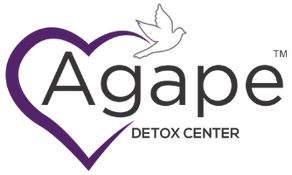There is a truism in addiction recovery treatment that “too much kindness kills addicts and alcoholics.” This saying relates to enabling, a process in which people with good intentions try to help an addict or alcohol, but instead make the situation worse.
Table of Contents
ToggleWhat Does It Mean to Enable?
When a person enables an addict, they’re doing something for the addict that they can and should do themselves, or they’re assisting the addicted person to avoid the negative consequences of their actions. Although a person may be acting out of love and concern for a friend or relative, the results of their enabling only prolong addictive behaviors.
Helping an alcoholic or addict means doing something for them that they are incapable of doing for themselves. Helping someone promotes a return to wellness; enabling them sustains their addiction because it allows the addicted person to avoid their responsibilities. Helping vs. enabling can make all the difference in their recovery.
The Dangers of Enabling
The biggest danger of enabling the addict is that it allows their addictive behaviors to continue and makes the situation worse. This happens because there are natural and logical consequences of addiction that enabling prevent the addict from experiencing it. For example, a natural consequence of an alcohol binge drinking session is a hangover; a logical consequence is getting a ticket for driving under the influence.
But enablers also suffer because of their actions. These are just a few of the common bad outcomes of enabling:
Depleted funds/Money problems. When addiction continues unabated, a family is very likely to experience severe financial difficulties. They may be unable to pay bills or even fall behind on the rent or mortgage payments.
Emotional and psychological exhaustion. Living with an addicted person or alcoholic is exhausting. Family members often put their own needs aside and do not get the emotional support they need, leading to emotional neglect. Enabling allows addiction to persist much longer than it would otherwise, which ends up exhausting everyone but the addict.
Resentments. Enablers suffer greatly because of their enabling. They end up lying for their addicted loved one or friend, losing money, losing time, doing more than their share, and so forth. They stuff their emotions down deeply where they fester and become resentment.
What is the Difference Between Helping and Enabling?
In the parlance of addiction and alcoholism recovery, helping someone is called empowerment. Empowering an addict is the opposite of enabling. It helps a person gain the knowledge and skills they need to return to a healthy ability to get their needs met without resorting to the use of addictive substances.
How to Tell if You are Enabling
Some people are more inclined to enable than others. Adult children of alcoholics and addicts may be particularly inclined to enable others, as they experienced the results of someone else’s addiction while young.
Many people enable without knowing they’re doing it, but if you recognize yourself in any of the following unhealthy patterns of behavior, you may be an enabler.
Typical Characteristics of Enabling
- Ignoring or tolerating problematic behavior. Enablers will tolerate outrageous behavior from the addicted person in the hopes of avoiding a confrontation or hoping the troublesome behaviors will go away on their own.
- Providing financial assistance. Addicts and alcoholics will often lie about why they need to borrow money. Supporting them by giving a person in active addiction money simply allows them to keep abusing substances.
- Covering for them, making excuses, or lying for them. Making excuses for an addict is one of the most common ways people enable them. Telling a spouse’s workplace they can’t come in because they’ve got the flu when in reality, they’re hungover is an example.
- Keeping secrets. Addicts will insist that their loved ones tell no one about what’s going on with them, which encourages lying and deceitful behaviors.
- Taking on their responsibilities. People who live with addicts often end up doing everything, including all household tasks, earning a living, and so forth. This happens because the addict is incapable of doing anything except getting or using their drug of choice.
- Avoiding the issue or denying that there’s a problem. Sometimes it can seem easier to just ignore behaviors that are worrying. Denial is also a form of enabling, as it allows the enabler to pretend there’s no problem at all.
- Failing to create and observe boundaries. Psychological and behavioral boundaries are the rules we set for what we will and won’t do and what we will and won’t tolerate. If you’ve set a boundary that you won’t converse with someone when they’re intoxicated, you’ve set a boundary,
- Failure to enforce consequences. When an addict or alcohol violates boundaries and you don’t carry out the consequences you’ve established, then you’ve encouraged the unacceptable behavior to continue.
How Can I Switch from Enabling to Helping?
It’s challenging to switch from enabling to helping, but these are the best ways to do so:
- Create healthy boundaries, with clear outcomes if they are violated.
- Encourage them to get help and support these efforts as much as you reasonably can. Offer to provide phone numbers and the contact information of recovery facilities.
- Let the addicted person know what you will and won’t do.
- Allow the addicted person to experience the consequences of their addiction.
- Support their positive actions but do not nag or scold.
- Stop making excuses for them.
- Don’t loan an addicted person money.
Getting Help For Your Loved One
Agape Detox has a resort-like setting with caring professionals located in Port St. Lucie, Florida. Our detox center takes a holistic approach to help people reclaim their lives and achieve total wellness. They offer medically supported detox services, inpatient rehab, dual diagnosis treatment for co-occurring disorders, and numerous options in therapy. If you’re ready to get help for yourself or a loved one, call us today.

Stephanie Catalano is an accomplished Clinical Director at Agape Behavioral Healthcare. With a Master of Social Work degree, LCSW license, and extensive training in Rapid Resolution Therapy under her belt, she brings a wealth of expertise to her role. Her unique combination of education and experience allows her to provide exceptional care to clients and lead her team with confidence. Stephanie’s joy comes from witnessing the moments when her patients creatively connect the dots and bravely move toward reclaiming their power. Her purpose is to help individuals understand their past so they can create a future full of hope, growth, and success. Stephanie attributes a large portion of her success to the supportive culture and strong sense of community fostered by the Agape team.




